Comments / Questions (70)
![]() Jytte Hansen wrote:
Jytte Hansen wrote:
Hvorfor skal der tages SÅ mange masker ind efter ribkanten er strikket ?
24.03.2020 - 09:51DROPS Design answered:
Hej Jytte, det gør du fordi hulmønsteret fylder meget mere end ribkanten. God fornøjelse!
25.03.2020 - 07:49
![]() Evy Kaasin wrote:
Evy Kaasin wrote:
Hei, jeg strikket ferdig delene til genseren «footprints in the sand» og skal montere. Mitt spørsmål er: skal ermene sys i for hånd el med maskinsøm? Det samme gjelder arm-og sidesømmer. På forhånd takk for svar
19.03.2020 - 21:27DROPS Design answered:
Hej De ska sys i for hånd. Mvh DROPS Design
20.03.2020 - 06:59
![]() Lorinda wrote:
Lorinda wrote:
Regarding the diagrams A.1-A.3 for size Small. When i get to the second repeat of the 2 yarnovers, row 7 in the diagram, the holes do not line up with the holes below. Is that how it is supposed to be? It does not look like that in the photo of the jumper. I have tried it different ways, knitting the stitch before, or not knitting the stitch before and with the same result. What am I doing wrong?
04.03.2020 - 11:00DROPS Design answered:
Dear Lorinda, make sure you have always the correct and same number of stitches in each diagram/rapport - adding a marker between each diagram can be a good way to check number of stitches. this video shows how to knit another kind of wave pattern but could be still helpfull on the repeat of the eyelet rows in height. Happy knitting!
04.03.2020 - 11:56
![]() Lorinda wrote:
Lorinda wrote:
Let me ask the question differently. A person wearing a size small has a bust of 86-91cm. The smallest size in this pattern has a bust of 98cm and a waist of 98cm. A full 10 cm too wide for a small person! It is sloppy big. Question is, can you publish a version of this jumper smaller than this? Your other patterns have smaller measures and even a size XS.
03.03.2020 - 12:42DROPS Design answered:
Dear Lorinda, we are unfortunately not able to adjust every pattern to every single request, you are welcome to contact your store - even per mail or telephone- for any further individual assistance. Happy knitting!
03.03.2020 - 15:32
![]() Lorinda wrote:
Lorinda wrote:
I am asking if there is a misprint for the chest measurement for size Small. 98cm is quite wide even considering wearing ease. Is this correct? I checked the diagram at the end of the pattern and that just confirms the same thing. I feel the garment will be sloppy-big at that measurement. Usually a Small is more like 87-91 cm. Thank you
02.03.2020 - 11:23DROPS Design answered:
Dear Lorinda, measurement chart is correct and matching the circumference of piece . Happy knitting!
02.03.2020 - 13:19
![]() Inna wrote:
Inna wrote:
Goededag, ik heb een vraag betreft telpatron van achterpand? Ik vond echt onduidelijk uitleg over stukje van telpatron waain staat: ga dan verder met dit patron brei eerst A1 , A2 en A3 en dan 4 herhalingen van A2 in de breedte zodat golfpatroon verplaats. ..mijn vraag is als ik moet volgen uw uitleg dan kom ik met mijn steken van 94 steken niet toekom, dus hoe zit het correct? Wilt u mij a.u b beter uitlegen! Bij voorbaat bedankt!
17.02.2020 - 20:10DROPS Design answered:
Dag Inna,
Op het punt waar je opnieuw verder gaat met het patroon zoals aan het begin beschreven, heb je nog steeds 94 steken. Je doet precies hetzelfde als toen je begon met de telpatronen voor het achterpand, dus 1 kantsteek in ribbelsteek, tricotsteek over de volgende 5-8-11-13-18-22 steken, A.1 over de volgende 9-9-9-10-10-10 steken, A.2 over de volgende 57-57-57-63-63-63 steken (= 3 herhalingen in de breedte), A.3 over de volgende 10-10-10-11-11-11 steken, 5-8-11-13-18-22 steken in tricotsteek en 1 kantsteek in ribbelsteek. In maat M kom je dan precies op 94 steken.
20.02.2020 - 20:55
![]() Judy Maguire wrote:
Judy Maguire wrote:
I have ordered yarn for this sweater but am not sure what size to knit for myself. I am 5 foot 8 inches with a bust of 112 cm. I normally purchase uk 18 size. What are your suggestions please.
24.10.2019 - 17:49DROPS Design answered:
Hi Judy, There is a sketch at the bottom of the pattern with all the measurements for the different sizes. Happy knitting!
25.10.2019 - 07:57
![]() Mariann Jensen wrote:
Mariann Jensen wrote:
Hej. Er lettere forvirret over hvor jeg finder brystmål i cm. Str. L og XL i cm ? Jeg har noget lækkert håndfarvet alpakka bruch men til P. 4
02.09.2019 - 13:00DROPS Design answered:
Hej Mariann, nederst i opskriften finder du målene i måleskitsen. Brystmålet er bredden x 2. God fornøjelse!
06.09.2019 - 08:46
![]() Jocelyn Neumann wrote:
Jocelyn Neumann wrote:
I'm just a little unsure about the amount needed to make this sweater
15.08.2019 - 05:50DROPS Design answered:
Hello Jocelyn. Depending on the size, you will need 125-150-150-175-175-200 g of Brushed Alpaca Silk. The yarn comes in 25 gr skeins, so this means: 5-6-6-7-7-8 skeins of yarn. Happy knitting!
15.08.2019 - 08:17
![]() Catherine wrote:
Catherine wrote:
Bonjour, Je vous avais questionné sur les diminutions. Je viens de comprendre l'explication !!!!
23.05.2019 - 11:28
Footprints in the Sand#footprintsinthesandsweater |
||||||||||
 |
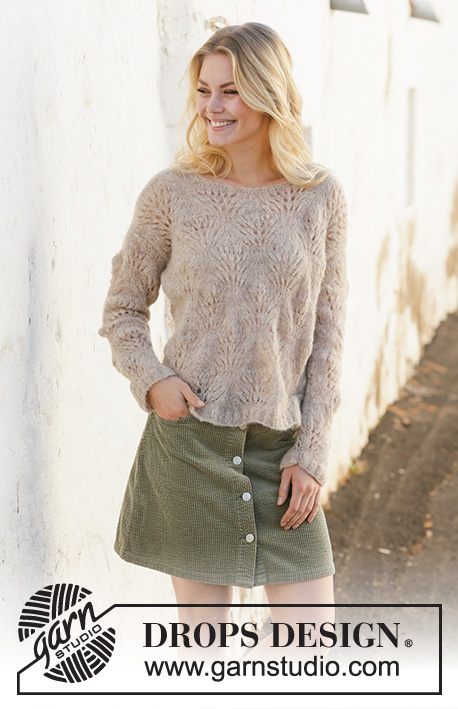 |
|||||||||
Knitted jumper with wave pattern in DROPS Brushed Alpaca Silk. Sizes S - XXXL.
DROPS 202-3 |
||||||||||
|
------------------------------------------------------- EXPLANATIONS FOR THE PATTERN: ------------------------------------------------------- RIDGE/GARTER STITCH (worked back and forth): Knit all rows. 1 ridge in height = Knit 2 rows. RIDGE/GARTER STITCH (worked in the round): 1 ridge in height = 2 rounds, i.e. knit 1 round and purl 1 round. PATTERN: See diagrams A.1 to A.3. Choose diagram for your size. The diagrams show all the rows in the pattern seen from the right side. DECREASE TIP (evenly spaced): To work out how to decrease evenly, count the total number of stitches on the needle (e.g.124 stitches) minus edge stitches (= 2 stitches) and divide the remaining stitches by number of decreases to be made (e.g. 36) = 3.38. In this example, decrease by alternately knitting together each 2nd and 3rd stitch and each 3rd and 4th stitch. INCREASE TIP (for sleeves): Increase 1 stitch by making 1 yarn over inside the 1 edge stitch on each side. On the next row work the yarn overs twisted to avoid holes. ------------------------------------------------------- START THE PIECE HERE: ------------------------------------------------------- JUMPER - SHORT OVERVIEW OF THE PIECE: The piece is worked back and forth with circular needle, bottom up and sewn together to finish. BACK PIECE: Cast on 124-132-140-156-172-180 stitches (including 1 edge stitch on each side) with circular needle size 4 mm and Brushed Alpaca Silk. Purl 1 row from the wrong side, then work rib from the right side as follows: 1 edge stitch in GARTER STITCH – read description above, (knit 2, purl 2) until there are 3 stitches left, knit 2 and 1 edge stitch in garter stitch. Continue this rib back and forth for 3 cm – adjust so that the next row is worked from the right side. Knit 1 row with 1 edge stitch in garter stitch on each side where you decrease 36-38-40-44-50-50 stitches evenly spaced – read DECREASE TIP = 88-94-100-112-122-130 stitches. Work 1 row stocking stitch back from the wrong side with 1 edge stitch in garter stitch on each side. Change to circular needle size 5.5 mm. Now work pattern – choose diagram for your size, as follows: 1 edge stitch in garter stitch, stocking stitch over the next 5-8-11-13-18-22 stitches, A.1 over the next 9-9-9-10-10-10 stitches, A.2 over the next 57-57-57-63-63-63 stitches (= 3 repeats in width), A.3 over the next 10-10-10-11-11-11 stitches, 5-8-11-13-18-22 stitches in stocking stitch and 1 edge stitch in garter stitch. Continue back and forth like this until the diagrams have been completed in height. REMEMBER THE KNITTING TENSION! Now work pattern – choose diagram for your size, as follows: 1 edge stitch in garter stitch, 5-8-11-13-18-22 stitches in stocking stitch, A.2 over the next 76-76-76-84-84-84 stitches (= 4 repeats in width), 5-8-11-13-18-22 stitches in stocking stitch and 1 edge stitch in garter stitch. When the diagram has been completed in height, continue this pattern, i.e. work first A.1, A.2 and A.3 as described at the beginning of the piece and then 4 repeats of A.2 in width so that the wave pattern is displaced each time it is worked in height. The remaining stitches are worked in stocking stitch and 1 edge stitch in garter stitch on each side. When the piece measures 34-35-36-37-38-39 cm from the cast-on edge (measure from where the rib at the beginning of the piece slopes downwards/is longest) cast off for armholes in each side as follows: Cast off 4 stitches 1-1-1-1-2-2 times, 2 stitches 0-1-1-2-2-3 times and 1 stitch 1-2-3-3-3-4 times (= 5-8-9-11-15-18 stitches cast off on each side) = 78-78-82-90-92-94 stitches. When the armhole measures approx. 13-14-15-16-17-18 cm from where the casting off began (there is approx. 3 cm left to finished length) cast off the middle 26-26-28-28-30-30 stitches from the right side at the same time as the 2 first and 2 last of these 26-26-28-28-30-30 stitches are knitted together before casting off (= 24-24-26-26-28-28 stitches for neck) = 26-26-27-31-31-32 stitches for shoulder on each side. Continue with as many whole repeats as there is room for in width and the remaining stitches are worked in stocking stitch with 1 edge stitch in garter stitch on each side. AT THE SAME TIME on the next row from the neck cast off 1 stitch = 25-25-26-30-30-31 stitches for shoulder. When the armhole measures 16-17-18-19-20-21 cm work stocking stitch with 1 edge stitch in garter stitch on each side where you decrease 2-2-3-3-3-2 stitches evenly on row = 23-23-23-27-27-29 stitches. Cast off. Make sure that the cast-off edge is not tight. Work the other shoulder in the same way. The piece measures a total of 50-52-54-56-58-60 cm from the shoulder down. FRONT PIECE: Cast on, work pattern and cast off for the armhole in the same way as for the back piece = 78-78-82-90-92-94 stitches. When the piece measures 41-43-44-46-47-49 cm from the cast-on edge work the next row from the right side as follows: Work pattern as before over the first 31-31-33-37-37-38 stitches, knit the next 16-16-16-16-18-18 stitches and at the same time decrease 2 stitches evenly (= 14-14-14-14-16-16 stitches) and place these stitches 14-14-14-14-16-16 on a thread for the neck, work pattern as before over the remaining 31-31-33-37-37-38 stitches. Then work each shoulder separately. Continue with as many repeats of the pattern in width as there is room for and the remaining stitches are worked in stocking stitch with 1 edge stitch in garter stitch on each side. AT THE SAME TIME cast off stitches for the neck on each row as follows: Cast off 3 stitches 1 time, 2 stitches 1 time and 1 stitch 1-1-2-2-2-2 times = 25-25-26-30-30-31 stitches on shoulder. When the armhole measures 16-17-18-19-20-21 cm work stocking stitch with 1 edge stitch in garter stitch on each side where you decrease 2-2-3-3-3-2 stitches evenly on row = 23-23-23-27-27-29 stitches. Cast off. Make sure that the cast-off edge is not tight. Work the other shoulder in the same way. The piece measures a total of 50-52-54-56-58-60 cm from the shoulder down. SLEEVES: The sleeves are worked back and forth with circular needle, bottom up. Cast on 54-54-58-62-66-66 stitches with circular needle size 4 mm and Brushed Alpaca Silk. Purl 1 row from the wrong side and then work rib from the right side as follows: 1 edge stitch in garter stitch, (knit 2, purl 2) until there is 1 stitch left on row and 1 edge stitch in garter stitch. Continue this rib back and forth for 3 cm – adjust so that the next row is worked from the right side. Knit 1 row with 1 edge stitch in garter stitch on each side where you decrease 12-10-12-14-16-16 stitches evenly spaced = 42-44-46-48-50-50 stitches. Work 1 row stocking stitch back from the wrong side with 1 edge stitch in garter stitch on each side. Change to circular needle size 5.5 mm. READ THIS WHOLE SECTION BEFORE CONTINUING. Work pattern – choose diagram for your size, as follows: 1 edge stitch in garter stitch, 1-2-3-2-3-3 stitches in stocking stitch, A.1 over the next 9-9-9-10-10-10 stitches, A.2 over the next 19-19-19-21-21-21 stitches, A.3 over the next 10-10-10-11-11-11 stitches, 1-2-3-2-3-3 stitches stocking stitch and 1 edge stitch in garter stitch. When A.1 to A.3 have been completed in height, work 2 repeats of A.2 in width – choose diagram for your size, over the 38-38-38-42-42-42 stitches in the pattern. When the 2 repeats of A.2 have been completed in height, work A.1, A.2 and A.3 as before over the 38-38-38-42-42-42 stitches with pattern. Continue this pattern upwards, i.e. work alternately in height first A.1, A.2 and A.3 and then A.2 (2 repeats in width). AT THE SAME TIME when the piece measures 9-8-7-7-6-6 cm increase 1 stitch on each side of the piece – read INCREASE TIP (for sleeves). Increase as follows in the different sizes: Size S: Increase every 8 cm a total of 5 times. Size M: Increase alternately every 5 cm and 6 cm a total of 7 times. Size L: Increase alternately every 5 cm and 6 cm a total of 7 times. Size XL: Increase alternately every 4 cm and 5 cm a total of 8 times. Size XXL Increase every 4 cm a total of 9 times. Size XXXL: Increase every 3 cm a total of 11 times. When all the increases are finished there are 52-58-60-64-68-72 stitches on the needle. The new stitches are worked in stocking stitch. When the piece measures 45-45-44-42-41-39 cm (shorter measurements in larger sizes due to wider yoke) continue the pattern as before and cast off stitches for the sleeve cap on the beginning of each row on each side as follows: Cast off 4 stitches 1 time, 2 stitches 2 times, 1 stitch 0-2-2-2-2-4 times, 2 stitches 2-2-4-5-6-5 times and 4 stitches 2-2-1-1-1-1 time = 12-14-16-16-16-20 stitches left. Cast off the remaining stitches. The sleeve measures approx. 52-53-53-52-52-52 cm. Work the other sleeve in the same way. ASSEMBLY: Sew shoulder seams with grafting stitches. Sew sleeves to body inside the 1edge stitch in garter stitch on body and inside the cast-off edge on sleeves. Make sure that the seam is not tight! Sew sleeve and side seams in one go. Repeat on the other side. NECK: Start mid top of shoulder and knit up 74-74-82-82-88-88 stitches with Brushed Alpaca Silk and circular needle size 4 mm. Work 2 ridges and cast off. |
||||||||||
Diagram explanations |
||||||||||
|
||||||||||
 |
||||||||||
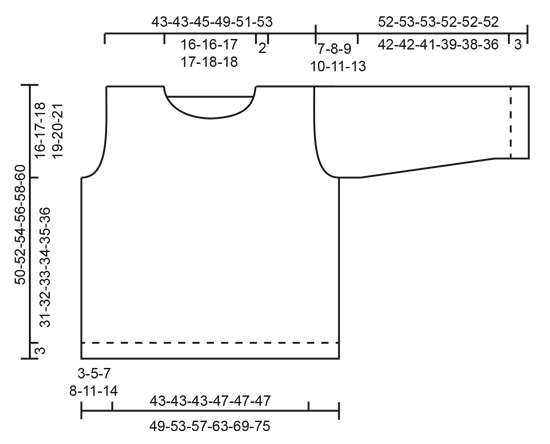 |
||||||||||
Have you finished this pattern?Tag your pictures with #dropspattern #footprintsinthesandsweater or submit them to the #dropsfan gallery. Do you need help with this pattern?You'll find 24 tutorial videos, a Comments/Questions area and more by visiting the pattern on garnstudio.com. © 1982-2025 DROPS Design A/S. We reserve all rights. This document, including all its sub-sections, has copyrights. Read more about what you can do with our patterns at the bottom of each pattern on our site. |
||||||||||







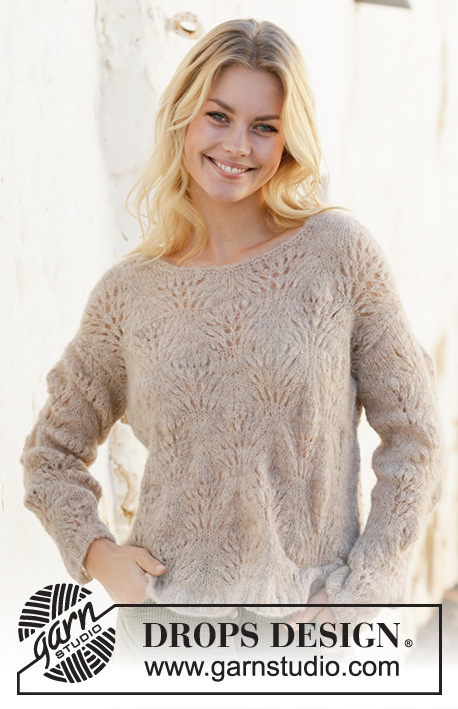


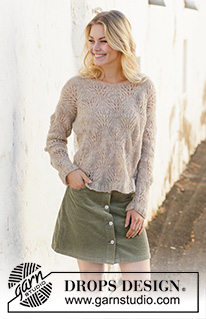

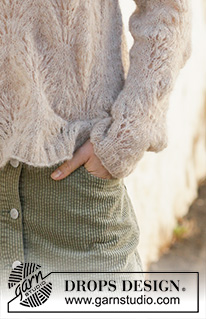






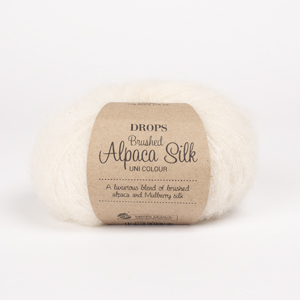
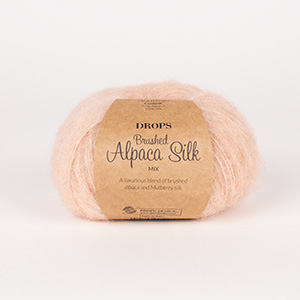

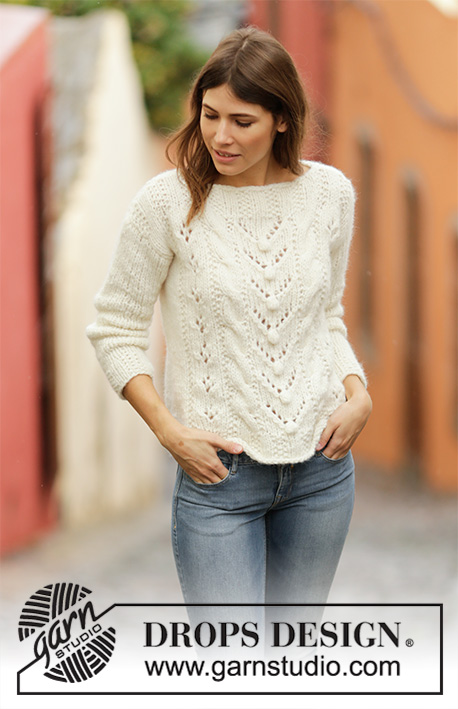












































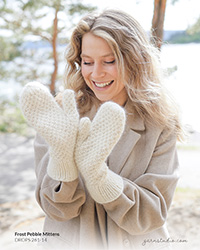

Post a comment to pattern DROPS 202-3
We would love to hear what you have to say about this pattern!
If you want to leave a question, please make sure you select the correct category in the form below, to speed up the answering process. Required fields are marked *.